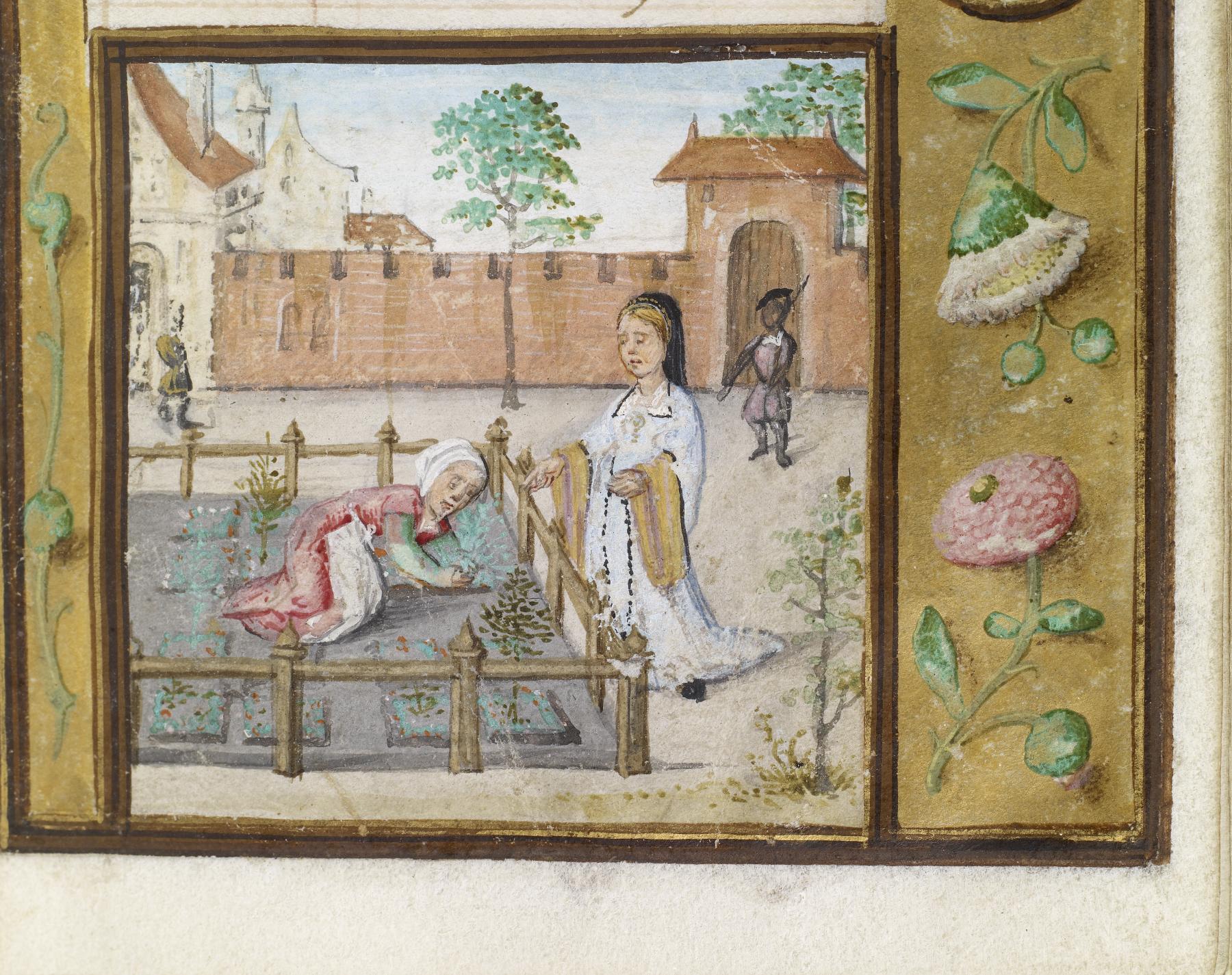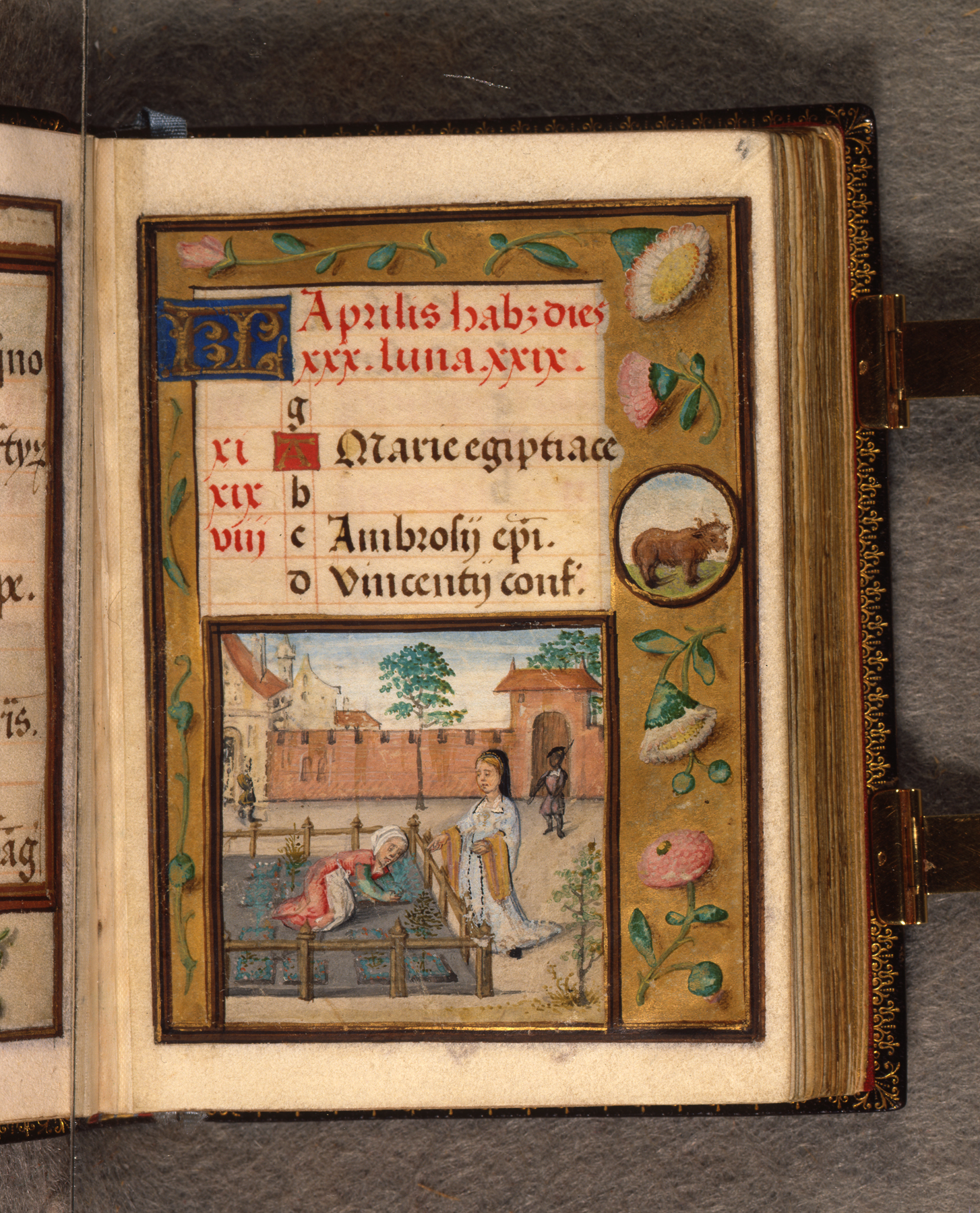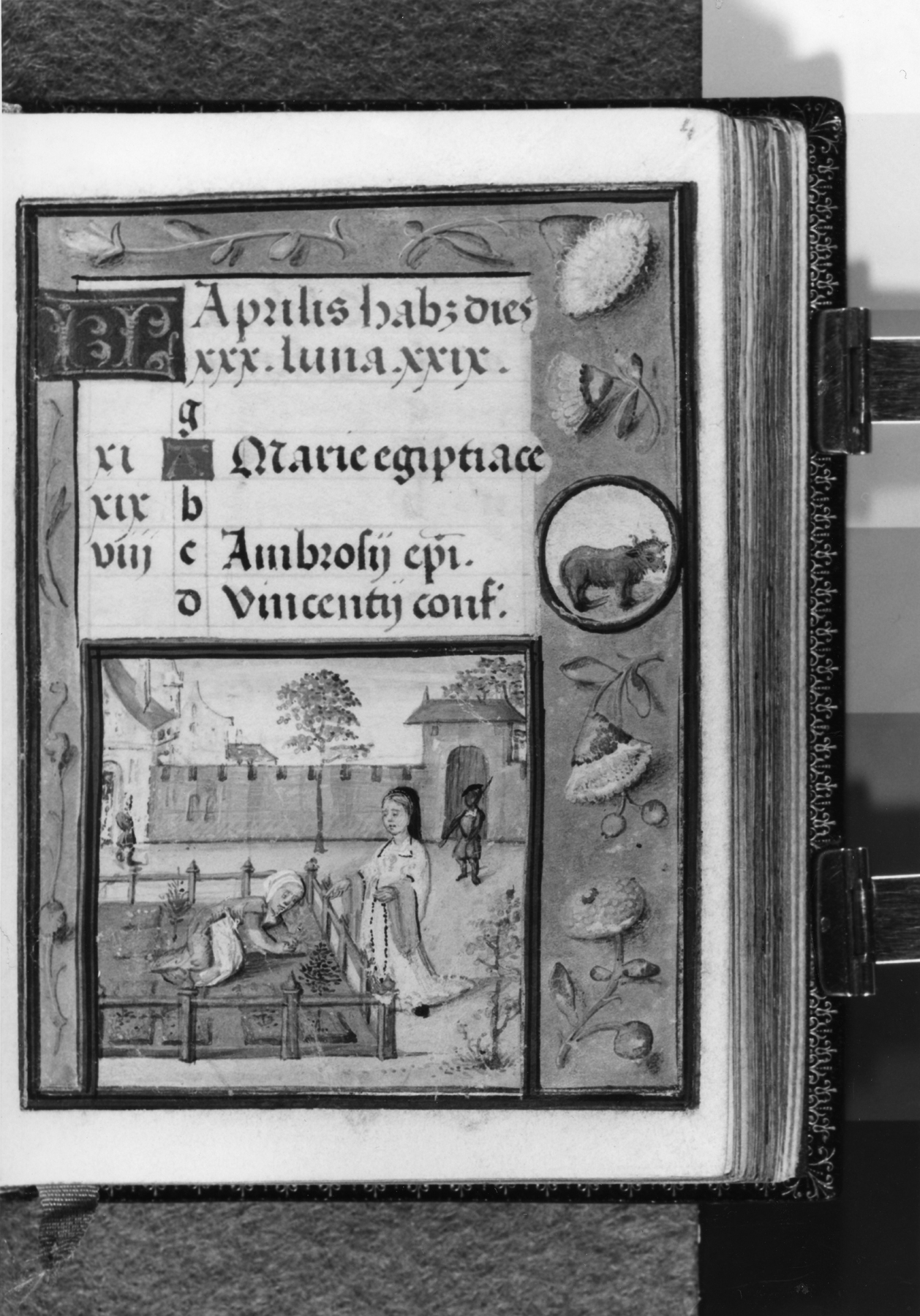Labor of the Month of April: Women Planting a Garden in Quadrants
(Manuscripts and Rare Books)
Order characterized the medieval garden: herbs and flowers were planted in a level place, organized in a grid by type (for example, fragrant and medicinal herbs in one section, flowering plants in another), and exposed to the sun. Here, an elegantly dressed lady holding a rosary gestures toward a garden, where a second lady plants (or perhaps harvests) herbs and flowers. The garden's geometric design is characteristic of medieval European gardens, which derived from the ordered quadrants favored in Persian garden design.
Provenance
Provenance (from the French provenir, 'to come from/forth') is the chronology of the ownership, custody, or location of a historical object. Learn more about provenance at the Walters.
Unknown Spanish owner [1], 19th century. Léon Gruel, Paris, ca. 1850-75 [2]. Peter Marié [ca. 1825-1903], New York, late 19th century; Peter Marié Sale, New York, 1903, lot 567. George Richmond, New York; purchased by Henry Walters, Baltimore; by bequest to Walters Art Museum, 1931.
[1] Inscriptions in lower margins on fols. 47v ("S. Catalina") and 54v ("Sancta Magdalen") indicate Spanish ownership
[2] Stamped in red capitals on front endleaf: GRUEL
Exhibitions
| 2012 | Paradise Imagined: Images of the Garden in the Islamic and Christian World. The Walters Art Museum, Baltimore. |
Geographies
Belgium (Place of Origin)
Measurements
H: 3 9/16 x W: 2 7/16 in. (9 x 6.2 cm)
Credit Line
Acquired by Henry Walters, after 1902
Location in Museum
Not on view
Accession Number
In libraries, galleries, museums, and archives, an accession number is a unique identifier assigned to each object in the collection.
In libraries, galleries, museums, and archives, an accession number is a unique identifier assigned to each object in the collection.
W.425.4R







